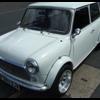Mmmm well drilling the snorkel would have no effect as the hole from the snorkel to the main filter housing would be the same size.
Drilling holes around the outside of the housing (the dirty side of the filter) would give you more air around the filter. But none of this answers the question. The question you need to ask is does the engine need more air? The answer is maybe but this would be at the top of the rev range when the engine is drawing in max air. The other question is is having the snorkel beneficial? The snorkel inlet is positioned to draw cold air into the inlet as cold air is denser (more oxygen). If you drill holes in the housing you are drawing hot air from above the exhaust manifold and hot engine so you are drawing less dense hot air.
You would be better to compare power/torque graphs of standard filters with cone filters.
http://www.calverst....filter_test.htm
Have a read of this article. Their conclusion is:
Conclusion
That famous phrase 'all that glitters isn't gold' is perfectly illustrated here. Something that looks and sounds like it should produce optimum results doesn't. Without a doubt, the optimum set-up on a small-bore engine is the standard plastic filter case with half-a-dozen three-quarter-inch holes drilled in it and using a K&N element.
A bit of good news for those 'noise' junkies - those extra holes give the induction sound of a Weber side-draught when under load, but are as quiet as a mouse when on part throttle. The noise IS addictive though!
I would also state here that this is not necessarily the case with the large bore engine units. I have had reports of gains of up to 6bhp when using a pancake (not cone) type K&N over the standard filter case set-up from a reliable source. Unfortunately I do not know if that is the standard filter case with standard filter, or with K&N element and other suitable mods. That'll be another test then…
Edited by Wise Old Elf, 08 January 2014 - 07:24 PM.
![]() )
)















